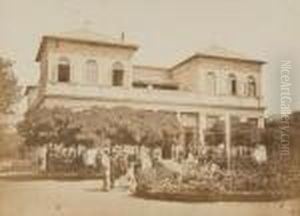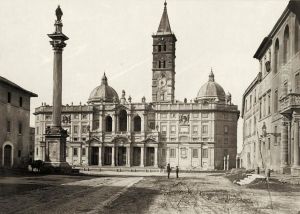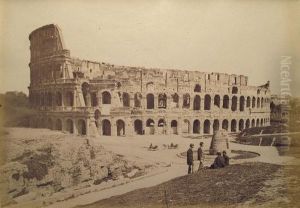Gioacchino Altobelli Paintings
Gioacchino Altobelli was an Italian photographer who played a significant role in documenting the cultural heritage and daily life of Italy during the 19th century. Born in 1825 in Rome, Altobelli embarked on his career as a photographer in the 1850s, at a time when the medium was still in its infancy. He is best known for his collaboration with the painter and photographer Pompeo Molins. Together, they formed the Molins & Altobelli studio, which became one of the most prestigious photographic establishments in Rome.
Altobelli's work encompassed a variety of subjects, including portraits, landscapes, and archaeological sites. He was especially renowned for his photographs of ancient Roman and Renaissance architecture, which served as valuable records of these monuments at a time when preservation was not as rigorous as it is today. His photographs were not merely documentary; they were often composed with an artistic eye, reflecting his background in painting and the influence of the picturesque and romantic movements of the time.
The Molins & Altobelli studio became a hub for cultural figures and tourists, who sought their services for both portraiture and souvenirs of Italian art and architecture. As a result, Altobelli's photographs played an important role in shaping the image of Italy abroad and contributed to the burgeoning field of art history by providing visual references for scholars and enthusiasts.
Beyond his partnership with Molins, Altobelli also worked independently and continued to innovate in the field of photography. He participated in international exhibitions and won awards, contributing to the rising prestige of photography as an art form. His works are now considered important historical documents as well as early examples of fine art photography.
Gioacchino Altobelli passed away in 1878, leaving behind a legacy as one of Italy's foremost photographers of the 19th century. His photographs remain valuable to historians, art historians, and anyone interested in the visual culture of the period. They provide a glimpse into the past, capturing the essence of Italian heritage and the early days of a medium that would revolutionize the way we see and record the world.


